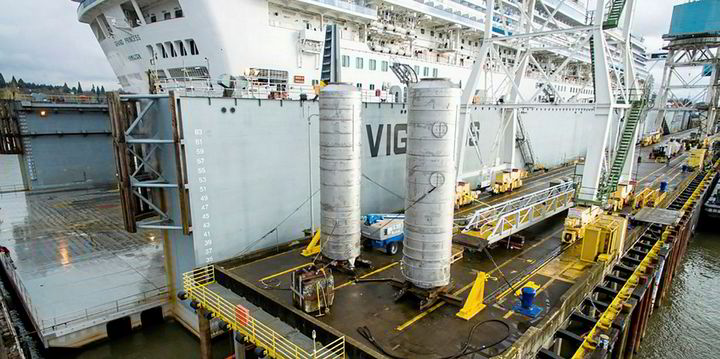Ledger Hatch

. › ‹. Back To Main Menu. › ‹. Back To Main Menu. › ‹.
JAMES EDGAR HATCH, JR. LAKELAND - James Edgar Hatch, Jr. 85, passed away November 3, 2019 with his loving wife by his side. Jim was born March 30, 1934 in Tampa, Florida to James and Luetta Hatch.
Back To Main Menu. › ‹. Back To Main Menu. › ‹. Back To Main Menu.
› ‹. Back To Main Menu. › ‹. Back To Main Menu. › ‹. Back To Main Menu. › ‹.
Back To Main Menu. › ‹. Back To Main Menu. › ‹. Back To Main Menu.
› ‹. Back To Main Menu. Subscriptions ›. Back To Main Menu. Star-Ledger documentary 'The Wreck of the Lady Mary' - The Lady Mary left the Port of Cape May on the morning of March 18, 2009 on a routine scallop fishing trip. The vessel with its crew of seven traveled 66 miles to the restricted scallop fishing area known as the Elephant Trunk. Some time between 5:10 and 5:40 a.m.
On March 24, the boat sank and six of the seven crewman were killed. Was it swamped in rough seas? Or did a passing container ship strike the boat without ever knowing it? (Film by Andre Malok/The Star-Ledger).
Four years and five months after the scallop boat Lady Mary sank 66 miles off the coast of Cape May, taking the lives of six of its seven crew, the U.S. Coast Guard yesterday issued its final report.The investigation concluded the Lady Mary's sinking was the result of 'a combination of numerous unsafe preconditions and a few unsafe decisions,' the 278-page report says.Chief among those preconditions was an open hatch on the deck that allowed the boat to flood in heavy weather and renovations to the vessel over the years that contributed to structural instability. “Additionally, a lack of training, lack of experience, language barriers, fatigue, vessel loading, drug use, insufficient watertight integrity, compromised vessel subdivision, and weather, all played a role,” in the accident, the report says.In the sixth paragraph, investigators also concluded, “based on a preponderance of the evidence,” that “the Lady Mary was not involved in a collision.”On March 24, 2009, the Lady Mary was nearing the end of a routine, early season fishing trip when its emergency distress beacon was automatically activated as the boat began to sink.
Because of a problem identifying the source of the distress signal, the Coast Guard wasn’t able to immediately launch its rescue helicopter. Only one of the crew, Jose Arias of Wildwood, was eventually found alive in the chilly waters off the New Jersey coast.Two years after the accident, he said he was no longer involved in commercial fishing and still struggled with survivor’s guilt, according to friends.
(Arias could not be reached for comment about the Coast Guard report.). The closest ship at that time to the Lady Mary, according to navigation records, was the 722-foot-long German container Cap Beatrice, headed toward the Port of Philadelphia. Download free software activation code amazing adventures the lost tomb. “Due to the lack of sufficient training,” the report continues, “the Captain and the crew were unprepared to deal with emergency situations and thus were not able to alter the course of these catastrophic and tragic events.”Months after the Lady Mary’s sinking, the boat’s mangled rudder was recovered and examined by the National Transportation Safety Board, which concluded the damage was likely caused by impact with the seafloor after the fishing vessel swamped and sank.

In the report released yesterday, the Coast Guard agreed.Fuzzy Smith’s lawyer, Stevenson Weeks, disputed the Coast Guard’s findings.“My experts say the damage was caused by a collision on the surface,” Weeks said. “They went further in their analysis and we have evidence that the rudder could only have been damaged at the surface.”That evidence, he said, comes from a metallurgical analysis of the 'shoe,' the bottom portion of the rudder, which was violently broken off the rudder.' If the damage was done when the boat struck the bottom,' Weeks said, 'the shoe would be where the vessel landed.' Although the Lady Mary was found in 211 feet of water and extensively photographed and filmed by professional divers, the shoe has never been found.Dozens of marine architects, professional shipwreck divers and former fishing vessel inspectors who have examined the wreckage either up close or through photos and videos, also dispute the Coast Guard’s sinking scenario. While they acknowledge the boat’s open access hatch was contrary to safety procedures, they argue it could not account for the boat sinking as quickly as it apparently did, without enough time for four of the crew to don survival suits.Even accepting a flooding scenario, these experts say, the damage to the fishing vessel’s stern, especially its buckled rudder stock, simply cannot be explained by the boat hitting the bottom.Stephen Stone, a mechanical engineer and founder of Stone Engineering Inc.
In Morehead City, N.C., specializes in accident reconstruction. After the Coast Guard’s initial hearings in 2009, he was contacted by Stevenson Weeks, the lawyer representing Fuzzy Smith, and asked to do an independent evaluation of the evidence, primarily the Lady Mary’s rudder.
His findings contradict the Coast Guard’s experts, who tried to calculate the forces needed to buckle the rudder stock. The problem with those models, says Stone, is that there are too many assumed variables.“In only half the tests they ran, with the most kinetic energy that could be generated, they still couldn’t get the rudder stock to buckle,” he said.
“Even if you accept their erroneous calculations, it’s off by orders of magnitude.The Coast Guard report also includes a lengthy section of more than 40 recommendations, from more crew training to new fishing vessel construction rules to emergency equipment requirements.Collisions between large commercial ships and fishing vessels continue to occur around the world on nearly a weekly basis. On May 18, 2011, six months after The Wreck of the Lady Mary appeared in The Star-Ledger, a 660-foot container ship called the Eurus London rammed a 163-foot fishing vessel, the Sandy Point, in the Gulf of Mexico, eight miles off the coast of Mississippi. Three fishermen died. The bodies of two of the crew of the Lady Mary, Jorge Ramos and Frank Reyes, have never been found.Several families of the dead are enjoined in lawsuits, one against the estate of Tim Smith, owner of the Lady Mary, who died in the sinking, the other against the National Oceanic and Atmospheric Administration and one of its contractors, who incorrectly copied the identification number of the Lady Mary’s emergency beacon into the NOAA database.The names of the six men who drowned that cold March morning can be found not far from where the Lady Mary left on her final journey. The Fishermen’s Memorial was erected more than 20 years ago. A sculpture of a mother and two children looks out to sea and behind the sculpture are two large slabs of granite etched with the names of 75 men of Cape May who never came home.Toward the bottom of the second slab are “Bobo Smith, Tim Smith, Tarzon Smith, Frankie Credle, Jorge Ramos and Frank Reyes, 2009.”.
